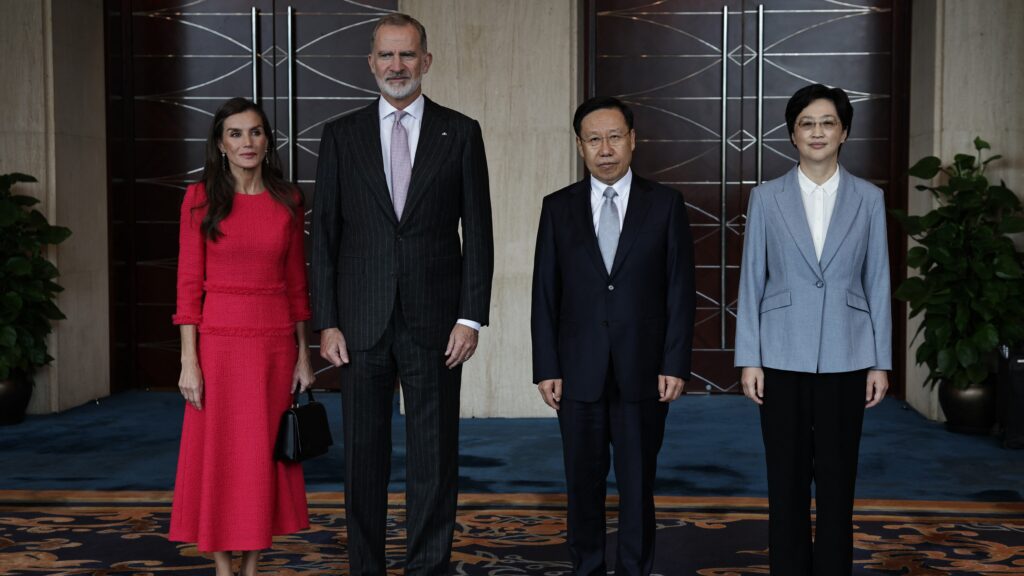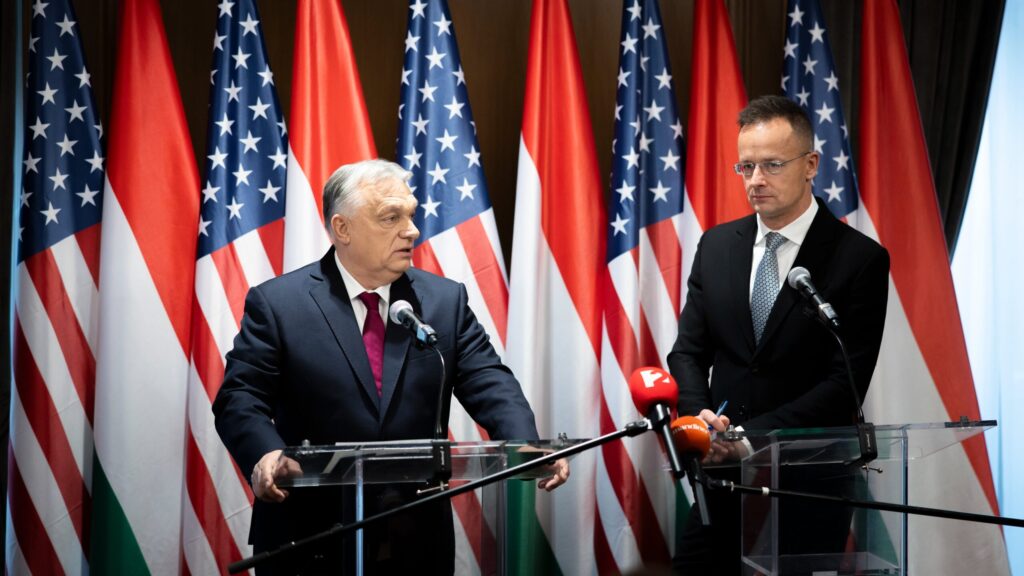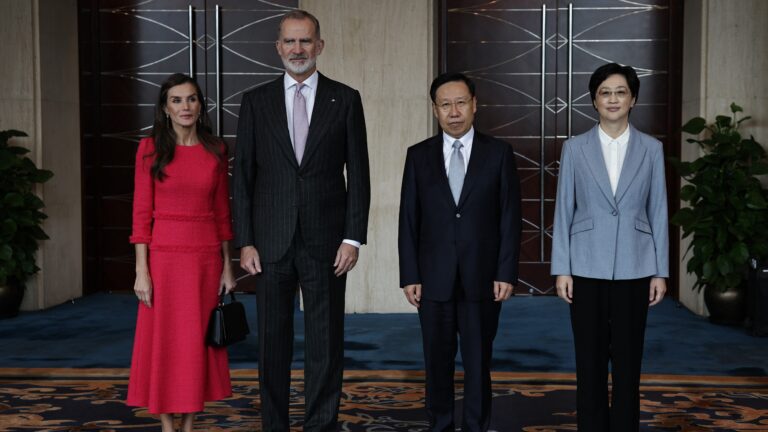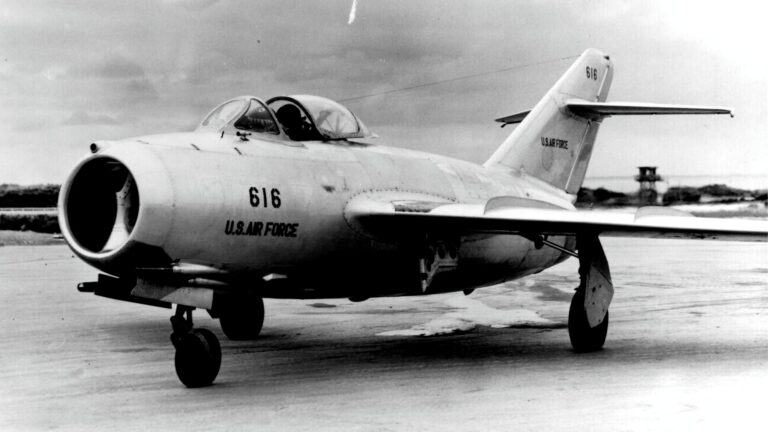Following Prime Minister Viktor Orbán’s successful meeting with U.S. President Donald Trump, Orbán declared that ‘a civilizational struggle is underway in the Western world…the future of Western civilization is at stake.’ His words echoed recent remarks by U.S. Chargé d’Affaires Robert Palladino, who emphasized that America’s relationship with a ‘civilizational ally’ like Hungary is not grounded in ‘abstract universalism’, but in ‘shared civilizational commitments’.
The renewed U.S.–Hungary relationship is about values, as well as strategy. Washington increasingly views Budapest not only as a civilizational ally but as a logistical and political bridge between Central Europe and the emerging Trans-Caspian connectivity network. As the United States deepens its engagement with Central Asia through the C5+1 framework and the Trans-Caspian International Transport Route (also known as the Middle Corridor), Hungary’s multi-vector foreign policy and its observer role in the Organization of Turkic States (OTS) position it as a key link between Eurasia’s new trade and energy corridors to the European market.
After a period of turbulence in U.S.–Hungary relations during the Biden Administration, the two countries have quickly moved beyond rhetoric. The Trump Administration and Orbán government have translated their shared values of Christianity, sovereignty, and peace, into tangible cooperation. For example, during the summit, the United States issued a sanctions waiver allowing Hungary to continue purchasing Russian energy, while Washington and Budapest also signed a major agreement to supply U.S.-based nuclear fuel and collaborate on civil-nuclear infrastructure.
‘Washington…views Budapest not only as a civilizational ally but as a logistical and political bridge between Central Europe and the emerging Trans-Caspian connectivity network’
This alignment demonstrates that the Washington–Budapest partnership extends beyond shared ideals to strategic economic and energy cooperation. The civilizational framing, once largely rhetorical, has become both a unifying narrative and a platform for bilateral engagement across strategic sectors.
Prime Minister Orbán’s meeting with President Trump followed the historic C5+1 Summit, where Washington and the leaders of Central Asia moved beyond diplomatic formalities toward an actionable strategy for diversifying transit corridors, mineral supply chains, and energy infrastructure across Central Asia and the South Caucasus. The United States and its Central Asian partners agreed, among other commitments, to strengthen supply-chain connectivity and resilience by fully developing the potential of the Middle Corridor and linking it to the Trump Route for International Peace and Prosperity (TRIPP). This framework aims to secure the movement of cargo, information, and energy for C5+1 countries, their partners, and the broader international economy, while continuing efforts to establish harmonized and transparent customs regimes.
The timing of both the Trump–Orbán and C5+1 summits could not have been more fortuitous. Together, they illustrate the Trump administration’s effort to build U.S. partnerships in both values and pragmatism, aligning civilizational allies like Hungary with pivotal regional partners across Eurasia to strengthen a shared economic and strategic architecture.
Instead of blindly following what Palladino cautioned was Brussels’ preference to pool sovereignty and treat borders as ‘passé’, Hungary, under Prime Minister Viktor Orbán, is positioning itself as a focal point within this U.S. Trans-Caspian strategy. As an OTS observer member, Hungary can, as one expert noted, serve as the proverbial ‘bridge between the Turkic World and the West’.
‘A policy of non-interventionist, strategic coexistence with China within the Middle Corridor is taking shape’
Washington’s Trans-Caspian strategy appears to reject the zero-sum mentality of America’s previous neoconservative era of ‘robust internationalism’. A policy of non-interventionist, strategic coexistence with China within the Middle Corridor is taking shape. On the periphery of the Middle Corridor, U.S. allies like Hungary are being offered greater flexibility on energy policy, no longer forced into the rigid ‘us-versus-them’ choices that once defined transatlantic policy over Russia.
While Beijing has largely financed construction of the new China–Kyrgyzstan–Uzbekistan railway, which will export goods through Central Asia and across the Caspian Sea primarily via Turkmenbashi Port, the United States has instead deepened commercial ties with Astana to support the modernization of Kyrgyzstan’s national railway. This initiative will help mitigate the risks of Chinese leverage over one of Eurasia’s most critical transport hubs. Kazakhstan has agreed to purchase $4.2 billion worth of US-manufactured Wabtec locomotives for its national railway, at least $3 billion in John Deere agricultural machinery, and welcomed $1.1 billion U.S. private capital investment in a tungsten mining and processing plant. With a growing U.S. presence in Kazakhstan, the Middle Corridor can serve as a secured export route for rare earths, critical minerals, and agricultural products.
Once these strategic goods are exported from Kazakhstan, the United States appears committed to establishing a secure trade route and harmonized customs process linking the Port of Aktau across the Caspian Sea to the Port of Baku. From there, cargo would move along Azerbaijani and Armenian segments of TRIPP, potentially transiting Georgia for export across the Black Sea to Europe via Romania and Hungary. Looking ahead, there is strong potential to expand the TRIPP framework through a unified, streamlined TRIPP II, which could connect the South Caucasus directly with Kazakhstan, and a TRIPP III, which could extend from Azerbaijan and Armenia through Georgia via either the KazTransOil-managed Port of Batumi or the deep-water Port of Anaklia, which, contrary to some reports, is not under Beijing’s management.
Hungary’s role within this emerging Eurasian architecture is set to expand. As an OTS observer member, Budapest can help shape the institutional framework linking Central Asia, the South Caucasus, and Europe. Orbán’s multi-vector commercial policy, which balances energy cooperation with Russia, selective investment from China, and strategic alignment with Washington, allows Hungary to act as a stabilizing bridge between great powers. Once goods transiting TRIPP and the Middle Corridor reach Romania, Hungary can then serve as a key overland export route into the European Union, turning Budapest’s connectivity ambitions into a transcontinental transport hub. Hungary will serve as both a civilizational ally and strategic partner in the U.S.-backed Trans-Caspian strategy, one that transforms its shared values of sovereignty and peace into hard infrastructure, secure trade, and strategic investment, linking the Turkic World to Europe’s heartland.
Related articles:







